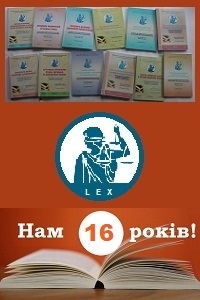The WTO legal system is a multilateral trading system aimed at creation of the globalized trade system by means of elimination of the existing trade barriers maintained by the states as effective instruments for protection of domestic industries. The respective barriers are often of the discriminatory and unpredictable nature that lead sometimes to the isolation of domestic economies. The respective issues were always of a great concern to the world society. Provided that at the beginning of the 20th century governments of some states started negotiating process aimed at creating of the International Trade Organization. Working parties worked on the legal document that was to serve as a Bible for the proper functioning of the prospective organization. However, that documents was not to be signed, nevertheless it received the status of the agreement (known as GATT) and was open for signing by all interested states. But the GATT was to play much more important role, as later it serves as a ground for establishment of the first trade organization known as the WTO. Subsequently GATT 1947 was amended and became one of the annexes to the Marrakesh Declaration based on which the WTO was created.
Currently the Marrakesh Declaration with a number of annexes (i.e, the GATT, Agreement on Agriculture, Agreement on Application of Sanitary and Phytosanitary Measures, Agreement on Trade-Related Investment Measures, Agreement on Implementation of Article VI of the General Agreement on Tariffs and Trade, Agreement of Preshipment Inspection, Agreement on Rules of Origin, Agreement on Import Licensing procedures, Agreement on Subsidies and Countervailing Measures, Agreement on Safeguards, GATS, Trade-Related Aspects of Intellectual property Rights, Understanding on Rules and procedures Governing the Settlement of Disputes, Trade policy Review Mechanism, Plurilateral Trade agreements, Agreement on Trade in Civil Aircrafts, Agreement on Government Procurement) serves as a legal ground for functioning of the WTO. The respective documents known as “covered agreements” of the WTO are deemed to be primary sources of the WTO and are used by the Dispute Settlement Body (“DSB”) during the dispute settlement procedures. Legal frameworks of functioning of the DSB are outlined in the DSU. However, the respecting agreement is salient in respect of the sources of law to be applied by the DSB within the dispute settlement proceeding. Therefore, based on the existing dispute settlement practice of the DSB a conclusion may be made that the DSB uses also secondary (external) sources of the WTO within the dispute settlement procedure.
Among the secondary sources of the WTO law are the following one: adopted and unadopted panel reports (reports of GATT panels, as well as WTO panels), Appellate Body reports, customs, teachings of the most highly qualified publicists, general principles of law, other agreements of the public international law referred to in “covered agreements”, other agreements concluded between the parties. In general, the respective sources are similar to those defined in the Art. 38 of the International Court of Justice. However, the DSB was rather reluctant at application of the external sources of the WTO law until it was forced to apply them.
The first instances of application of the secondary sources of the WTO law in the dispute settlement practice of the DSB appears in the 1980s. In the respective cases obligations of the MSs of the WTO were in conflict with the obligation of the respective Member States (“MSs”) of the WTO under other treaties of the public international law, in particular environmental conventions. Provided that, MSs of the WTO claimed violation of the WTO obligations justified by environmental policy of the MS. MSs were convinced that such breach was allowed within the WTO and even prescribed in the Art. XX of GATT 1947. The respective issues were considered by the DSB in the following cases Canada – Measures Affecting Exports of Unprocessed Herring and Salmon, United States – Tuna I, United States – Tuna II, United States – Tuna and Tuna Products from Canada. Unfortunately, the DSB was rather reluctant at application and interpretation of the secondary sources of the WTO law and limited itself only with the mentioning of the Vienna Convention on the Law of Treaties (“VCLT”), as well as respective environmental conventions. However, this first mentioning booster subsequent development of the doctrine in respect of the nature of the WTO obligations and further development of the dispute settlement practice in this regard.
Regarding the nature of the WTO obligation experts of the public international law developed three approaches that helped us better understand possibility of application of the external sources of the WTO law in the dispute settlement practice, as well as establish the relations between the WTO law itself and the public international law. The following approaches are: WTO law as a bundle of bilateral obligations, WTO obligations as obligations erga omnes partes and WTO as a “potpourri” of obligations.
According to the first approach WTO obligations are viewed as divisible negotiated on bilateral nature and them automatically due to most-favored nation treatment obligations extended on other MSs of the WTO. Provided that interstate bilateral treaties are governed by the public international law, WTO should be also considered as a part of the public international law. Second approach challenged the bilateral nature of the WTO obligations and state that obligations are of the collective nature that is secured by the dispute settlement mechanism. Provided that, the WTO law should be regarded as a “self-contained’ regime in the public international law. The last approach is a chimera of the two abovementioned approaches that claim bilateral nature of the WTO obligations and collective interest in their maintenance. The third approach is rather questionable one and is subject to further development.
Based on the abovementioned approaches regarding the nature of the WTO obligations, other approaches towards the relations between the WTO law and the public international law were also developed. Dispute settlement practice of the WTO DSB catalyzed the respective process.
Unlike GATT panels, WTO panels were more reluctant to examine the provisions of the external sources of the WTO and apply them within the dispute settlement procedure. Such a great change resulted from adoption of the Marrakesg Declaration that amended profoundly the dispute settlement system . Provided that, now the DSB was obliged to consider precisely disputes related to the principle of sustainable development.
In the two cases, namely United States – Gasoline and United States – Shrimps the Panel, as well as Appellate Body, referred to a number of external sources of the WTO and commented on their application.
In case United States – Gasoline the DSB stated that “covered agreements” should not be read in the clinical isolation of the other sources of law, therefore, the DSB may apply other sources of the public international law in the dispute settlement procedure. Moreover, the DSB interpreted and defined criteria for application of the Art. XX of the GATT 1994 based on which usually conflict of WTO law and provisions of the public international law exists.
In case United States – Shrimps the DSB also considered application of Art. XX of the GATT 1994 with the view of the findings made by the DSB in case United States – Gasoline. Moreover, the DSB interpreted terms used in the respective article with the help of the following conventions of the public international law: the United Nations Conventions of the Law of the Sea (UNCLOS), the Convention on International Trade in Endangered Species of Wild Fauna and Flora (CITES), the conservation of Migratory Species of Wild Animals, the Convention on Biological Diversity etc.
Thus, the DSB made a great progress in application of the sources of public international law in its dispute settlement practice. With regard to the favorable dispute practice of the DSB experts of the public international law decided from the theoretical prospective define the relations between the public international law and the WTO law itself.
List of references:
1. Van den Bossche, P.andZdouc, W. The Law and Policy of the World Trade Organization // Cambridge University Press – 2013.
2. Tarcissio Gazinni. The Legal Nature of the WTO Obligations [Electronic reference] / Tarcissio Gazinni – Access mode to the reference: http://www.ejil.org/pdfs/17/4/97.pdf.
3. Isabelle van Damme. Treaty Interpretation by the WTO Appellate Body [Electronic reference] / Isabelle van Damme – Access mode to the reference: http://www.ejil.org/pdfs/21/3/2067.pdf.
4. David P. The WTO legal system: Sources of Law [Electronic reference] / P. David, M. Petros C. // The American Journal of international law. – 1998. – Access mode to the reference: http://www.jstor.org/discover/10.2307/2997915?sid=21105444340411&uid=3738032&uid=2&uid=4.
5. Carmody. WTO Obligations as a Collective [Electronic reference] / Carmody. – 2006. – Access mode to the reference: http://www.ejil.org/pdfs/17/2/81.pdf.
6. Pauwelyn. The Role of Public International Law in the WTO: How far can we go? [Electronic reference] / Pauwelyn – Access mode to the reference: http://www.jstor.org/discover/10.2307/2668492?sid=21105446450701&uid=4&uid=3738032&uid=2.
7. Marcaue. Conflicts of Norms and Conflicts of Jurisdiction: The Relationship between the WTO Agreement and MEA’s and other Treaties [Electronic reference] / Marcaue – Access mode to the reference: http://jpkc.zzu.edu.cn/esjmyzzf/ebook/lw/Conflicts_of_Norms_and_Conflicts_of_Jurisdictions-_The_Relation.pdf.
8. Marceau Gabrielle. Dispute Settlement's Mechanism Regional or Multilateral: Which One is Better? [Electronic reference] / Marceau Gabrielle – Access mode to the reference: https://archive-ouverte.unige.ch/unige:28354.
|









